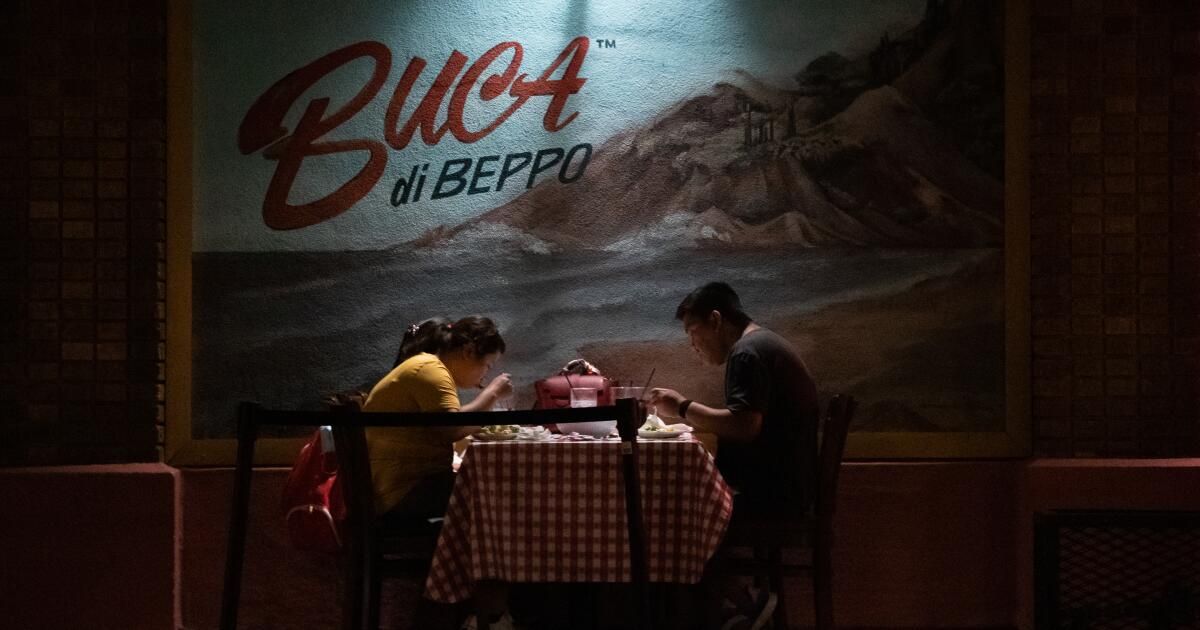Days after closing more than a dozen restaurants, Italian-American restaurant chain Buca di Beppo has filed for Chapter 11 bankruptcy.
The company, known for serving large portions to large groups and for its kitschy decor, said it intends to use the bankruptcy process to restructure its operations and keep 44 locations open, including restaurants in Pasadena, Universal City, Encino and Redondo Beach.
“This is a strategic step toward a strong future for Buca di Beppo,” said Rich Saultz, president of the company, in a statement. “While the restaurant industry has faced significant challenges, this step is the best one for our brand.”
William Snyder, chief restructuring officer, said the remaining restaurants were open and “we expect daily operations to continue uninterrupted” during the bankruptcy. Gift cards, reservations and promotions remain active and can be redeemed.
Buca di Beppo has been shrinking its brick-and-mortar presence for years, beset by many of the same problems facing competing restaurants: low consumer spending, higher employee wages and rising food costs, among others. The Orlando, Florida, company, which saw sales decline 4.7 percent last year, peaked at 95 locations in 2013, according to Restaurant Business.
Last month, Buca di Beppo abruptly closed 13 restaurants, roughly 20% of its portfolio, including a location in Sacramento. The privately held company, founded in Minneapolis in 1993, is opening a new location.
The July closures and Monday's filing mark the latest sign of distress for the restaurant industry.
In June, Rubio's Coastal Grill closed 48 of its California restaurants, including 24 in the Los Angeles area. Days later, the Carlsbad, California-based fast-casual restaurant chain filed for bankruptcy protection and said it was looking for a buyer. It continues to operate 86 restaurants in California, Arizona and Nevada.
“Like the restaurant industry at large, Rubio's has been negatively impacted in recent years by declining store traffic attributable to ongoing work-from-home practices and rising food and utility costs, combined with significant minimum wage increases in California, putting pressure on several of its locations,” the company said in a statement.
And in May, Red Lobster filed for Chapter 11 bankruptcy after closing dozens of locations.
The seafood chain has foundered in recent years due to management missteps, the effects of a sale to a private equity firm a decade ago and, most recently, its failure to recover after pandemic closures. Red Lobster said its remaining locations — about 580 in the U.S. and Canada, as well as franchises in a handful of other countries — would operate as usual during the bankruptcy process.












